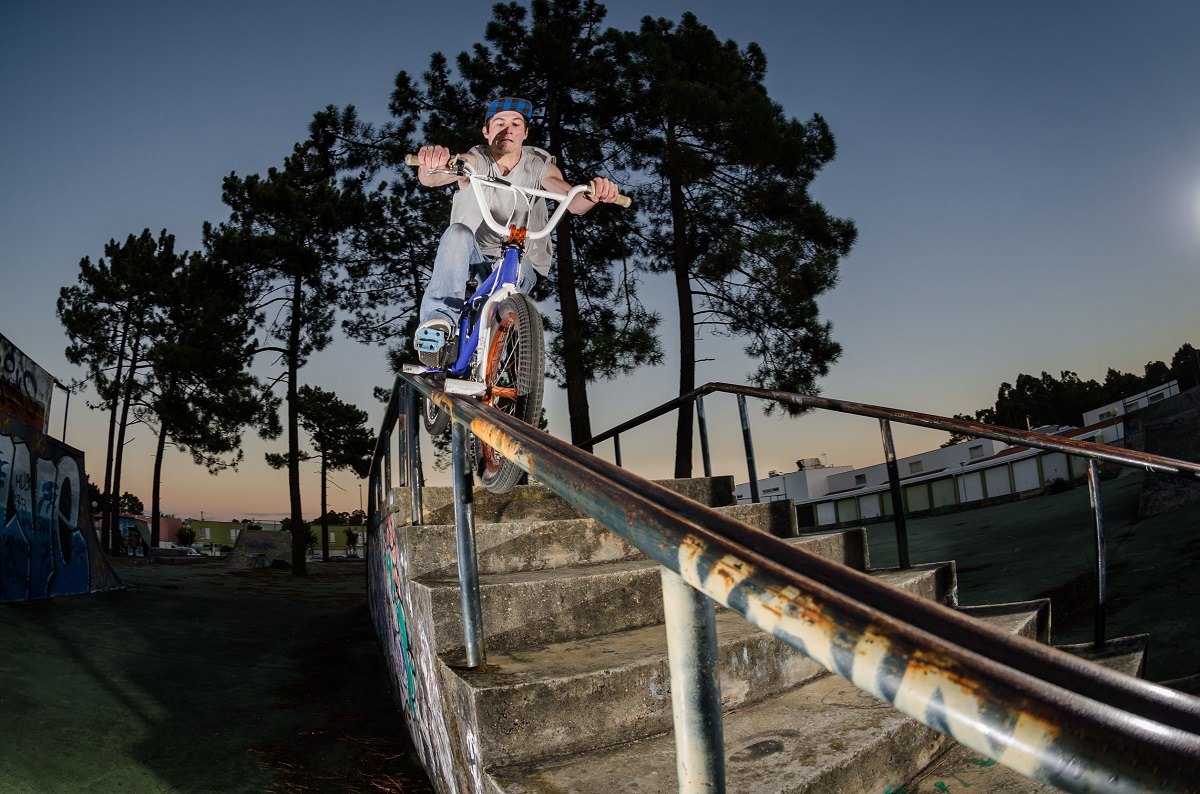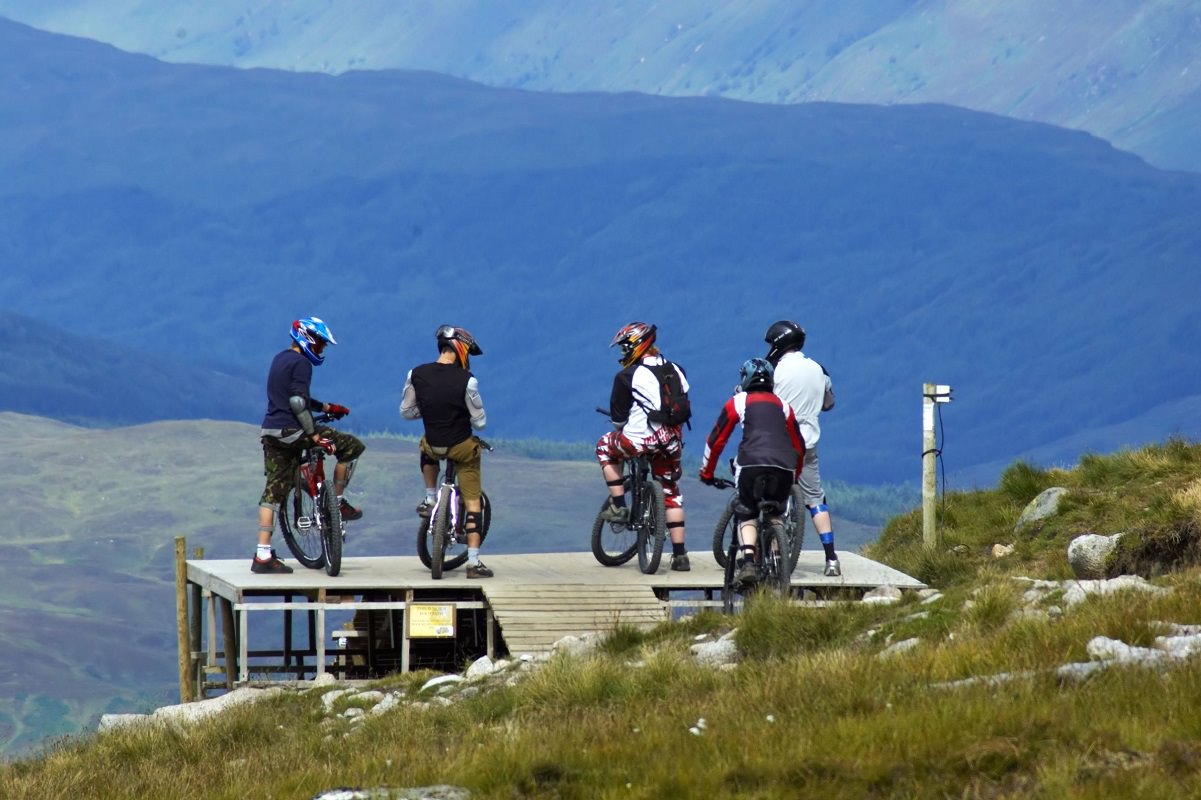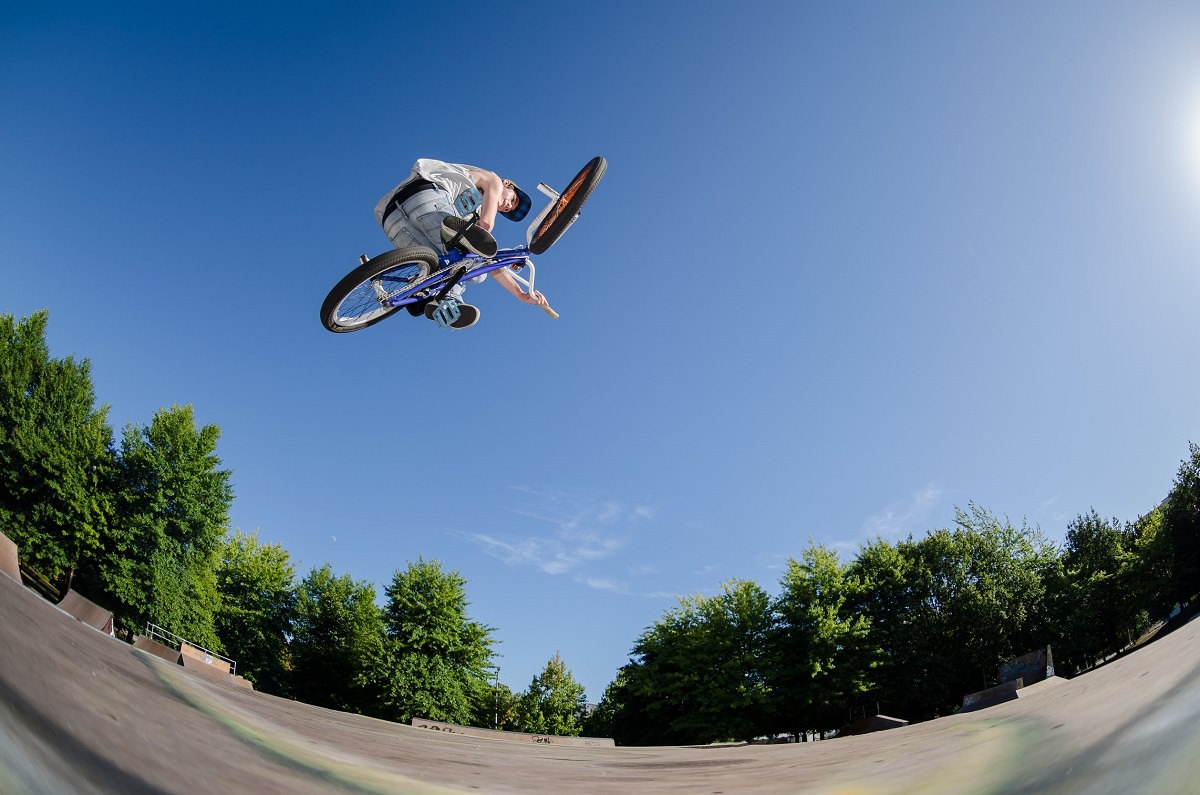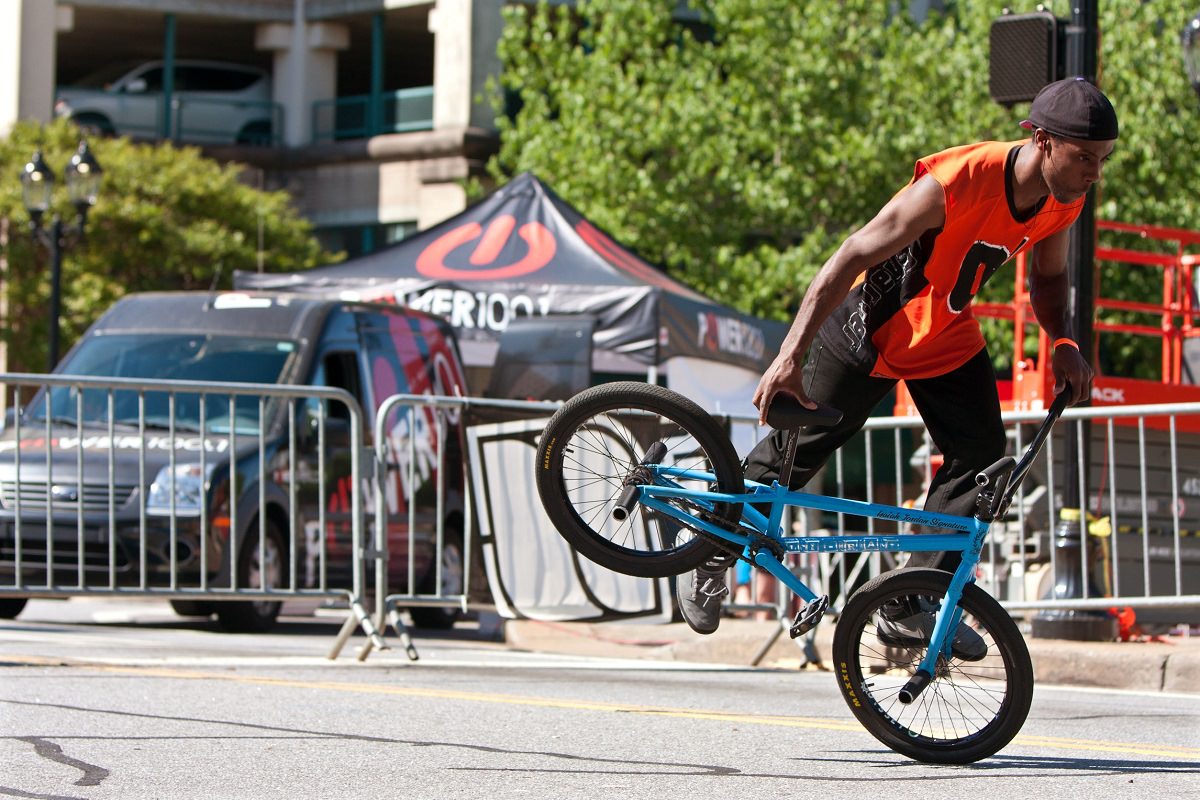BMX bikes are known all over the world of cycling as off-road bikes that are used mainly for racing and tricks. The very name BMX means “Bicycle Motocross”. There are many kinds of BMX bikes in the world, each with their particular use.
Each type has a different quality of build and is intended for different purposes, such as off-road racing, street racing, stunts, and so on. The bikes are made of different materials and have slightly varied designs when it comes to their frames.
BMX is becoming a very popular sport indeed. Kids love BMX bikes and always have since their inception. This is because they are a lot smaller than standard mountain bikes or touring and road bikes. Children like BMX bikes both because of this and because they impart a sense of being “cool” when riding one in the park or around the neighborhood. They ARE riding bikes that were created to be raced, after all. They were even featured in the 2008 Olympic Games in Beijing!
What Makes BMX Bikes The Perfect Trick Bikes
BMX bikes are very different indeed to your standard road bikes and mountain bikes. While there are only a few very obvious differences between many road bikes to the untrained observer, even an amateur could spot the many differences between BMX bikes and the rest of the biking world. Some of these differences are exactly what make BMX bikes the perfect choice for stunts and tricks, whether on the streets or off the road.
There are two large families of BMX bikes: racing and trick bikes. The latter is more commonly called freestyle, because that is what it is comprised of – people showcasing their skills in stunt biking by literally flying through the air atop their BMX bikes, performing a whole range of tricks in mid-air. Freestyle BMX bikes have several unique qualities that make them the perfect bikes for performing crazy, out-of-this-world tricks and stunts, on the pavement, in the park, and everywhere else:
1. Their Biult Supports The Stunts
Freestyle BMX bikes come with a 20-inch (or approximately this) long top tube on their frame. When you compare this to the far longer 40 – 45 inch top tube on standard road bikes, you can see just how much smaller the frame of the BMX bike is. The top tube is great at this size because stunt cyclists can swing the bike 360 degrees in mid-air without hitting the frame and possibly falling hard.
This small frame effectively cuts the weight of the bike almost in half. This makes it perfect when it is necessary to pick up a large amount of speed in the short distance between jumps. The material that it is made from also plays a huge factor in the ease with which jumps can be made and tricks performed.
2. They Are Lightweight
Most BMX freestyle bike frames are made out of chrome steel alloy (Chromoly to bikers). These materials are extremely lightweight. One of the perks of this material is that in addition to being lightweight, it still maintains its strength and durability.
Aluminum is also used in BMX frames, but it is much lighter than chromoly steel and is more common in BMX racing bikes for its higher speed capabilities.
Confused about the different bike frame materials? Read our take on titanium vs. carbon fiber bikes and choose the better option.
3. These Bikes Are Made Using Durable Materials
BMX bikes are required to be lightweight, and true. They also need to be durable. When riding a BMX bike for freestyle tricks, the bike is going to take quite a lot of abuse, no matter what discipline of freestyle riding you may be practicing. Because of this, the bikes need to be able to take a harsh beating every day and still be ready to go when you next need them.
The material that freestyle bikes are made of (the higher-end bikes) is chrome–molybdenum steel alloy. This alloy has the particular quality of being very strong indeed while maintaining its lightness, making it perfect for stunt biking.
4. Their Wheels Are Perfect For Stunts
The wheels of BMX bikes are very different from those of normal bikes. The wheels vary based on what the bike is going to be used for. Traditionally though BMX bikes have featured small wheel sizes and knobby tires, made for gripping the dirt in the off-road tracks they were built for. On freestyle BMX bikes, the wheels are usually 20” in size. This is one of the most popular BMX bikes.
Generally, they come in a ‘one size fits all’ type of design (for the most part, at least). The tire treads vary for different disciplines. For example, trail biking will require a groove pattern that is very knobby with deep grooves to achieve maximum grip off-road. However, street and flatland bikes are on the pavements and roads, so they do not require a lot of grip. Because of this, their tire patterns are smoother, allowing for spinning to be done on the ground with less friction against the tarmac of the street.
5. They Have Strong Rims
Wheels usually also feature powerfully built rims for extra durability. This is important when the discipline involves a lot of bumps. The rims could get damaged or even split if too weak.
6. They Don’t Have Gears
One of the perks of a BMX freestyle bike is that the bike doesn’t need to have pedaling efficiency. BMX bikes are rarely used for long-distance cycling. This means that to cut down on weight, the standard for BMX bikes is one gear. It also doesn’t generally make use of a freewheel assembly. This is particularly useful when it comes to stunts, as the cyclist can backpedal to go in reverse.
In addition to this, the lack of gears and extra assemblies on the bike makes for an overall faster, lighter bike with fewer components that can fall apart at crucial moments or slow the cyclist down. Although gears aren’t present on the bikes, the ratio between the main gear and the rear pinion can vary based on the discipline. For the precision and accuracy needed on the street and in flatland riding, the bikes have a ratio of 25:8, while for dirt and trail biking, the ratio is closer to 36:18.
7. They Have Basic Brakes Perfect For Freestyle Ridding
Freestyle bikes don’t make use of brakes much, but some have very primitive “u-brakes” on them to allow for basic stopping. Most BMX bikes are stopped with a foot on the rear wheel to provide the necessary friction. (Maybe that’s where the term “brake shoe” came from). Freestyle bikes involve a lot of spinning, so normal brake cables can’t be used. They may get entangled in the handlebars when doing a 360 and kill someone. Instead, they are routed through a gyro within the tube to allow for spinning.
8. They Have Pegs
Pegs are usually found on BMX bikes in the street and flatland disciplines. They attach to the front and rear wheels rather like the footrests on a motorbike. They are used to help the rider center their weight. This is very important if you are going to perform mid-air stunts on your bike. They are commonly used by stunt riders to grind on rails and bars.
Types of Freestyle BMX Disciplines
Freestyle BMX is a broad discipline of BMX stunt riding, and there are quite a few subcategories to it that have their differences (that’s right, all you fanatics preparing to shoot me in the head for generalizing freestyle riding can sit right back down, or pedal off now).
There is no real rulebook to the art of freestyle riding. The point of freestyle, whether in riding or even dance, is to express an aesthetically pleasing set of moves that an individual has made. Because of this, emphasis is only placed on certain qualities of a freestyle rider, such as creativity, originality, skill development, and riding style. The main types of freestyle riding are based on these as well, along with the terrain or locale in which the riding is done. These include:
| BMX Riding Style | Description | Key Features |
|---|---|---|
| Street Riding | Perform tricks in public places with obstacles like curbs, guide rails, stairs, and other street items. | Varied tricks based on location. Utilizes urban obstacles. |
| Park Riding | Utilizes ramps and transitions at skate parks. | Tricks involve high-flying jumps and maneuvers. Ramps can be wood or concrete. |
| Vert | Features a half pipe with vertical extensions on the upward transition. | Mainly used in BMX competitions like the X Games. Known for high vertical extensions (e.g., 27 feet tall). |
| Trails | Self-made dirt jumps arranged in long lines with multiple jumps. | Off-road jumps with as many as 8 jumps in a row. Utilizes the natural terrain for jumps. |
| Flatland | Tricks are performed while touching the flat ground, involving spinning and manipulation of the body and bike stability. | Ground-based tricks that focus on body and bike control. Involves intricate spinning and balancing maneuvers. |
FAQs
What does a BMX bike stand for?
BMX bike stands for Bicycle Motocross.
Are BMX expensive?
BMX bikes with high-quality features can be expensive.
Is BMX better than MTB?
It depends on the kind of riding you prefer. Both type of bikes have different purposes.
Is BMX good for road?
No, BMX bikes have special features. They might not be perfect for road cycling.
Are BMX good for kids?
Yes, BMX is good for kids if they are interested in stunts and freestyle riding.
Can girls ride BMX?
Yes, girls can ride BMX
Conclusion
BMX bikes are used for a variety of purposes. The above are some of the reasons why they are consistently the best choices for stunt bikes by professionals and amateurs alike. If you are looking for a BMX bike to start learning tricks on, make sure you wear the proper safety equipment, and choose the components based on what you know about the different disciplines. Good luck, and stay safe (ish)!
Also Read:
Should you have any questions or require further clarification on the topic, please feel free to connect with our expert author Luke Ameen by leaving a comment below. We value your engagement and are here to assist you.






4 thoughts on “8 Things That Make BMX Bikes The Perfect Trick Bikes”
Thank you Luke, that is great skills and jumps there.
Those are some sick moves Luke and love this article.
As quoted in the above article… “Weight – Freestyle BMX bikes come with a 20 inch (or approximately this) long top tube on their frame. When you compare this to the far longer 40 – 45 inch top tube on standard road bikes, you can see just how much smaller the frame of the BMX bike is.”
“40-45 inch top tube!!!!!” Completely erroneous. Most road bikes will have a “square geometry” A 54cm frame will have an approx 54cm seat tube and top tube for example. Same for larger and smaller sizes. And road bikes are measured in metric.
Highly ill informed article. Case in point: it says BMX bikes do not use a freewheel, and are completely fixed gear instead. This allows rider to pedal backwards ect. This is not true. No BMX has or will ever be built with a fixed rear cog. Simply for the reason that it makes jumps and most tricks a LOT harder.